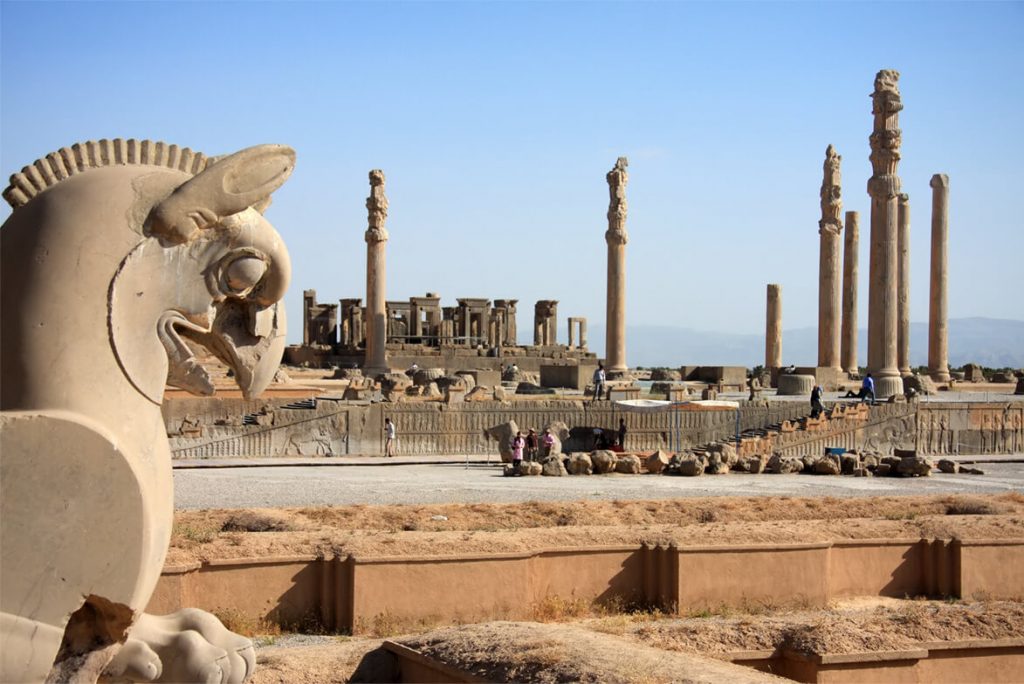
Persepolis was the ceremonial capital of the ancient Achaemenid Empire. Based on the findings, the earliest relics found in this site date back to 515 BC; when Cyrus the Great chose its location at the foot of the Kuh-e Rahmat (mountain of mercy).
In the city, there was a magnificent complex, known as Thakht-e Jamshid (throne of Jamshid). This glorious building was constructed by the order of the Dirush l and later, some other parts were added by the kings after him.
Takht-e Jamshid was the vernal residence of the king and his family; where they would celebrate Nowruz -the Persian new year celebrated even now. In addition to that, it was the place where the nobility and the tributaries would come to present their gifts to the king.
Some historians believe that Alexander destroyed and burned the city, and plundered its heritage along with many books it held! While some others hold this belief that such claims are not true and it’s mix with a great amount of exaggeration and lies!
Why visit Thakht-e Jamshid?
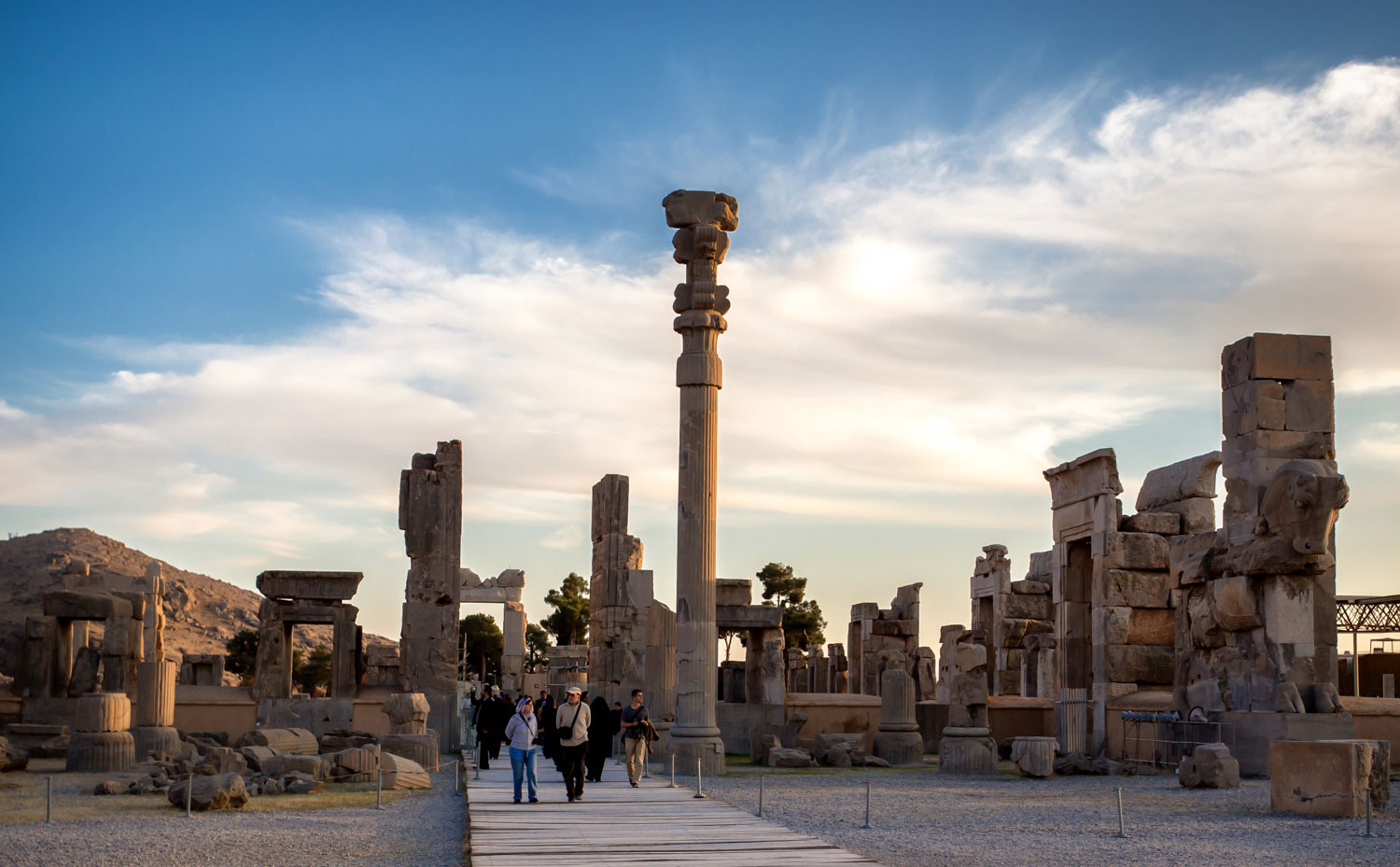
Although there is not much of this complex left, still its glory can be seen through its remnant. You can imagine its former glory as you walk up from the elegant stairs, pass the gigantic pillars and look at the great patterns on the walls.
Persepolis is one of the world’s greatest ancient historical sites registered in the UNESCO World Heritage Sites list. Well-known as the gem of Achaemenid ensembles in the fields of architecture, construction technology, urban planning, and art.
Attractions Of Persepolis
Apadana palace
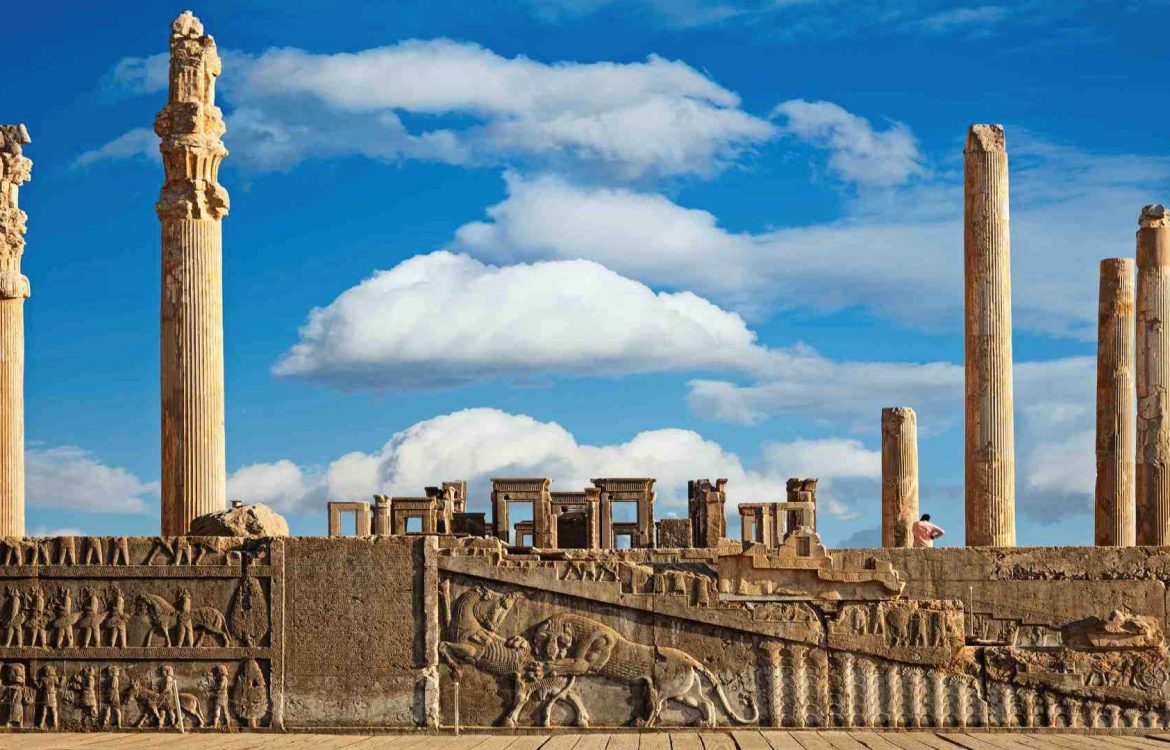
Apadana palace or the throne room is the largest and most magnificent building of this city. Where Nowruz celebrations took place and foreign delegations would be received by the king. The place is accessed by two staircases on the north and eastern side of it. On the walls of these stairs, there are magnificent bas-reliefs and inscriptions showing ceremonies and some beliefs.
Tachara
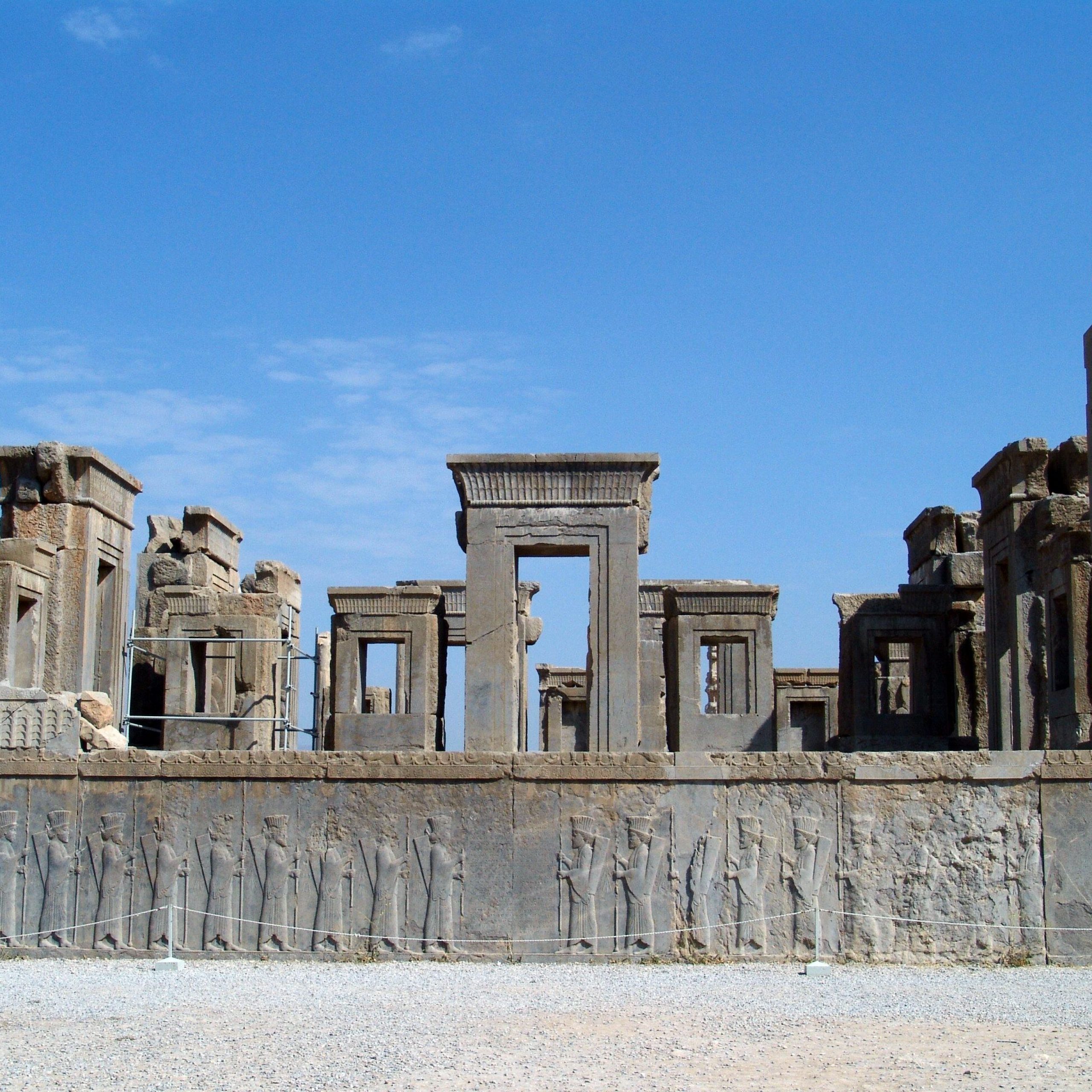
Placed in the southwest of Apadana, Tachara (winter palace in old Persian), also referred to as the Palace of Darius, was one of the earliest constructions of Thakht-e Jamshid. It served as the Nowruz venue until the other buildings that would comprise Persepolis could be finished.
Hundred-column hall

At the east of the Apadana courtyard, we have the second largest building of Persepolis, the Sad-Suton (hundred pillar) palace, also known as the throne hall. The main part of this palace is a square hall with an area of over 4,600 square meters. The ceiling of the hall was mounted on 10 rows of 10 columns, displaying a unique sight of glory. The columns are said to have reached a height of 14 meters, which were all engraved with beautiful flowers and other decorative carvings.
Best Time to Visit Thakht-e Jamshid
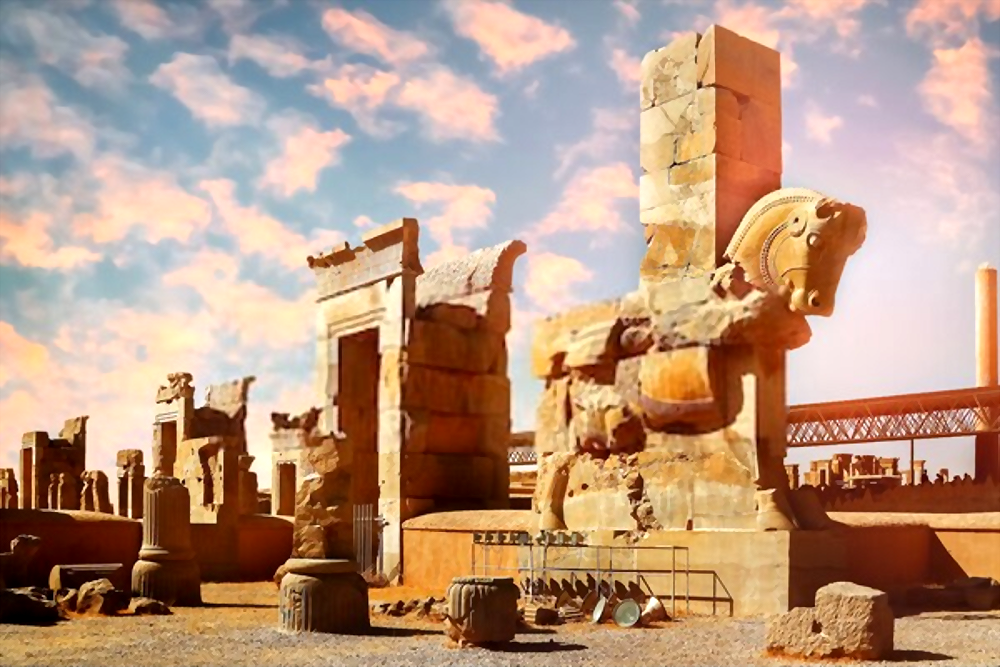
Spring is the best season, as it is not cold, not hot. Although it could get a bit crowded. When visiting, make sure to bring sunglasses and drinking water because it is located at the foot of a mountain and it’s quite a distance which you should walk.
It’s better to take a good tour guide with you. Without one, it is hard to learn the stories behind from the written guides.
Visiting time: Every day from 8:30 to 19:30 in the first half of the year and 08:00 to 18:30 in the second half of the year
Thakht-e Jamshid, Location and Accessibility
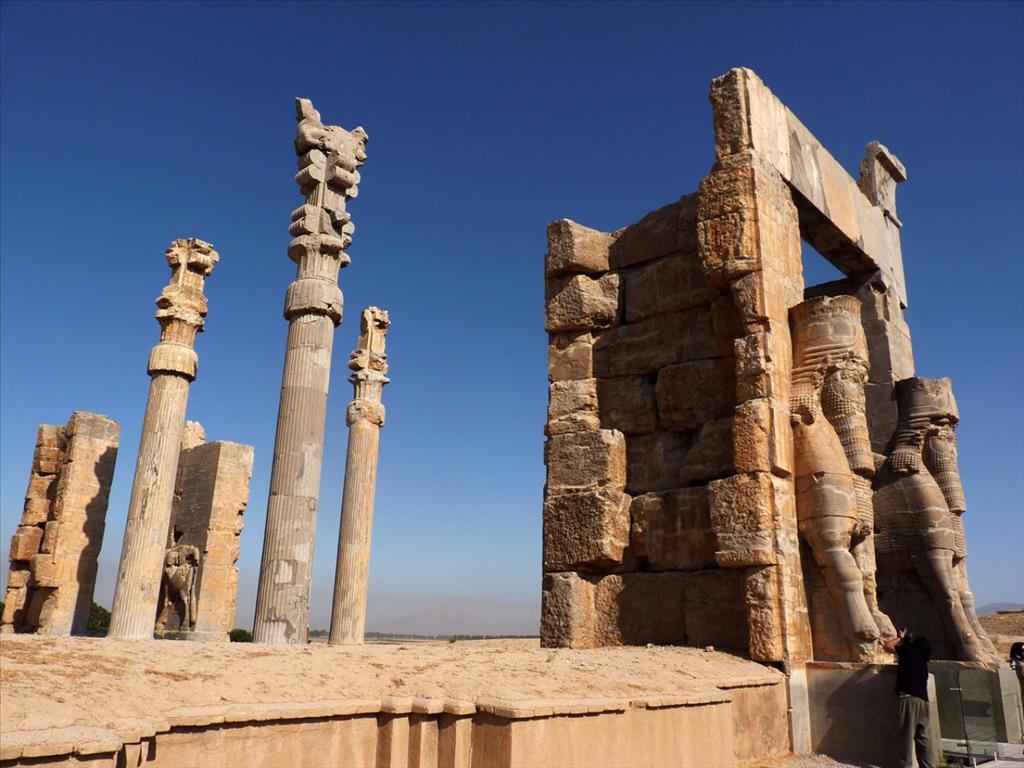
Address: Takht-e Jamshid Complex, Marvdasht County, Fars Province
It is located in the north-east of Shiraz, at a distance of 60 Km.
Public Transportation is also available. You can use minibusses or intercity taxis which can be accessed at the Shahid Karandish Shiraz Terminal and Marvdasht Park Station.

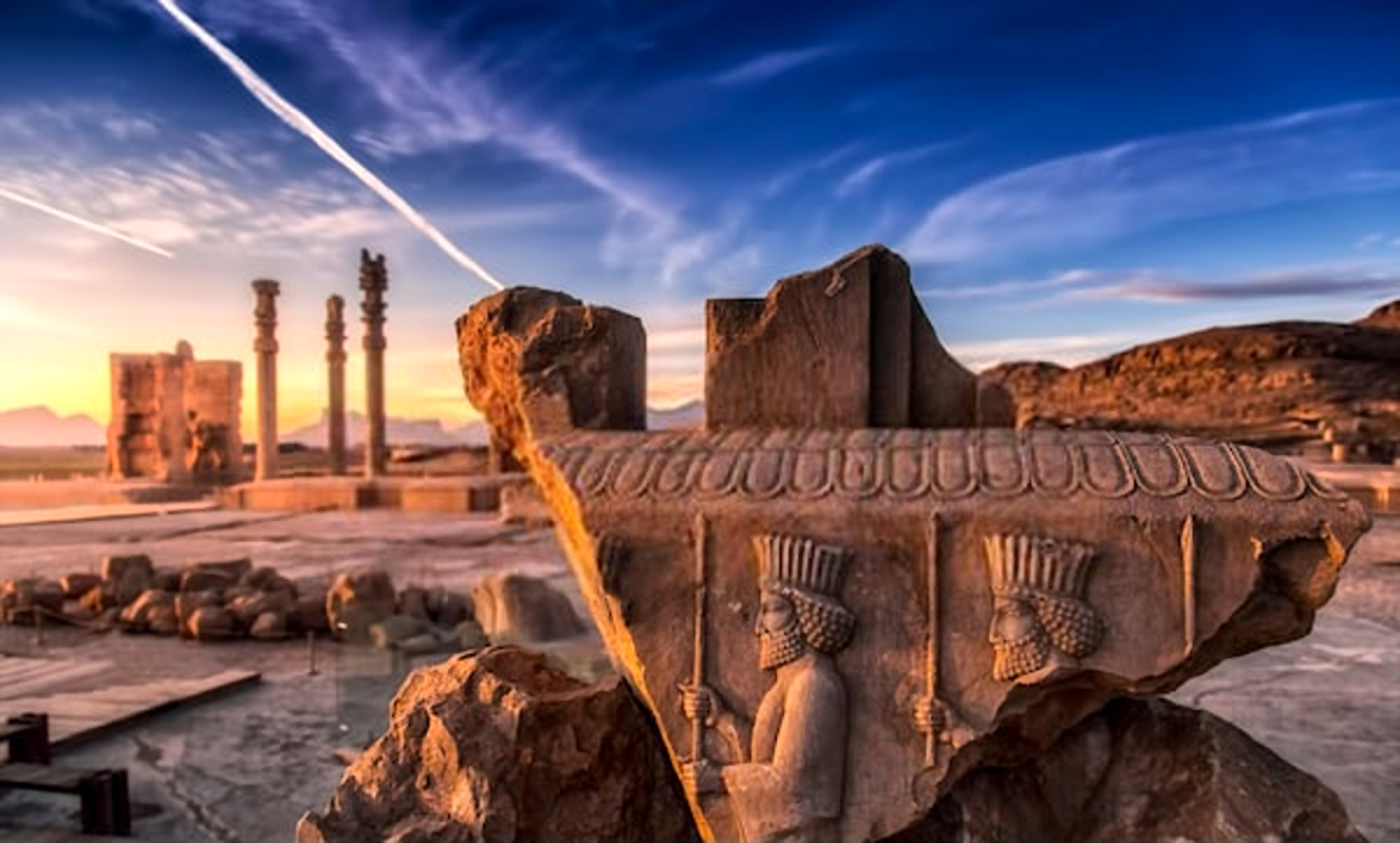

Comment (0)